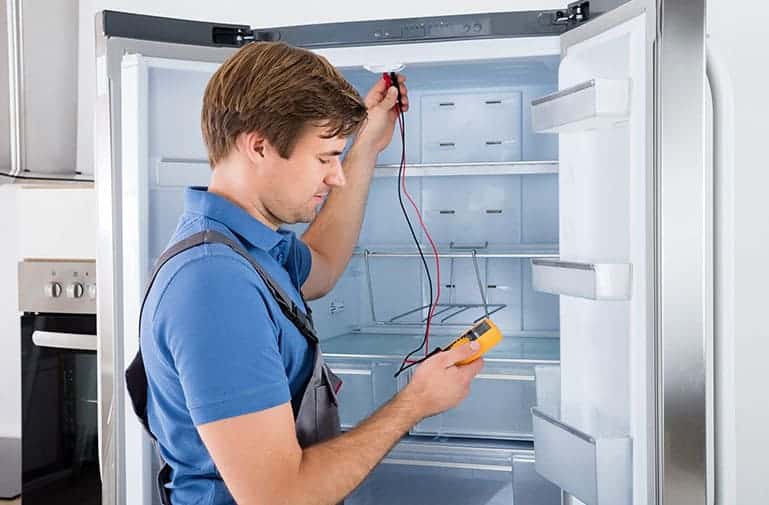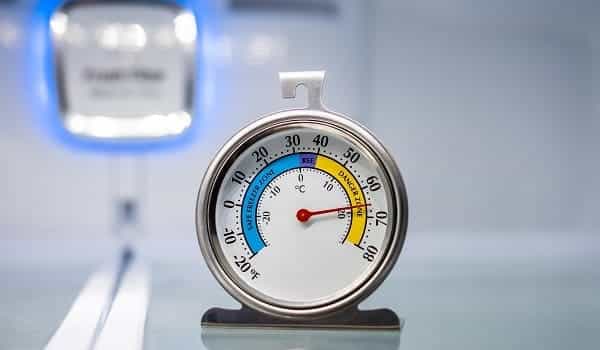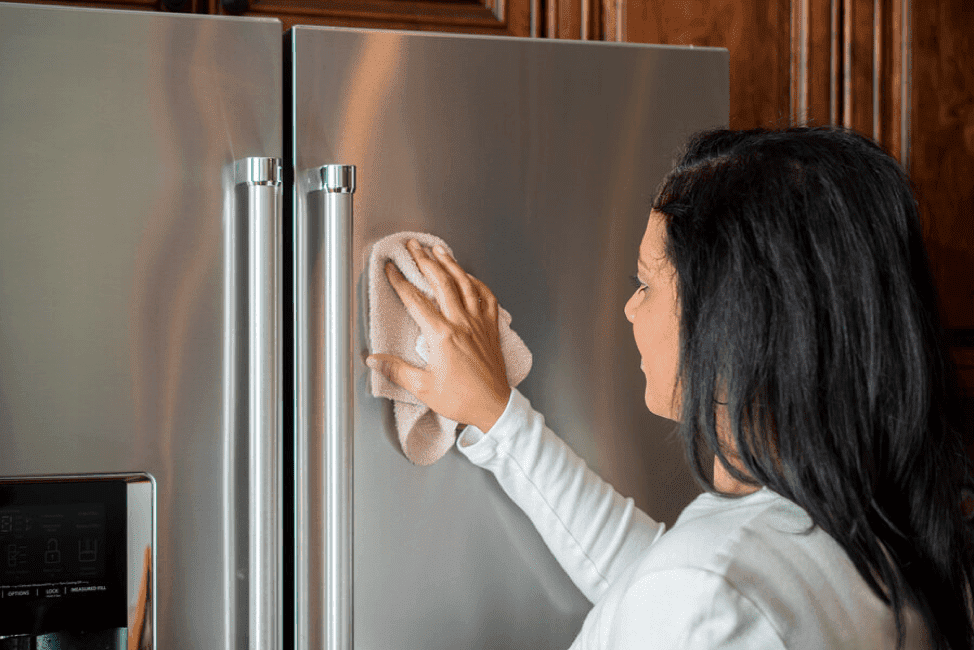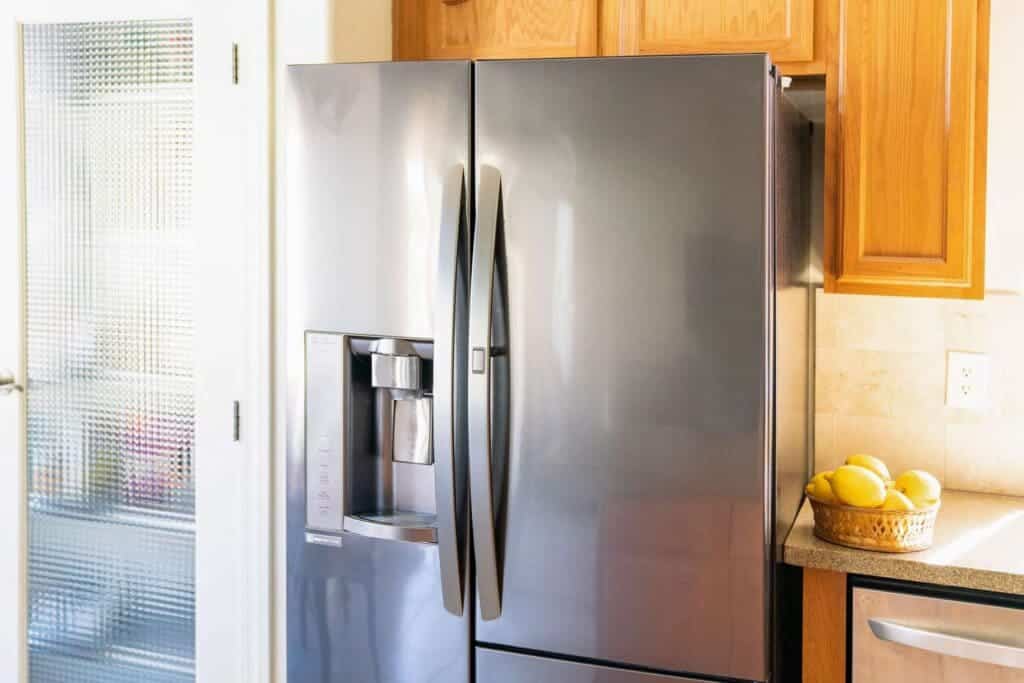Table of Contents
A refrigerator is a necessary kitchen equipment that helps maintain the freshness and safety of our food. It is a device that works 24 hours a day and night without any breaks or pauses. Sometimes, the refrigerator stops cooling, which causes major problems and potential health hazards due to rotting food. This issue is annoying and troublesome and requires immediate diagnosis and solution. Various refrigerator components might get damaged or faulty, resulting in improper cooling. In this article, we have addressed the nine major reasons that might be responsible for your refrigerator not cooling correctly. You can follow a step-by-step guide to diagnose the problem with any of the components and their potential solutions so that you can enjoy fresh food and chilled beverages.
Common Reasons Your Refrigerator Is Not Cooling

1. Thermostat Settings
Incorrect thermostat settings can prevent your refrigerator from cooling properly.
Solution
Check the thermostat settings. For the refrigerator, they should be approximately 37°F (3°C), and for the freezer, they should be 0°F (-18°C). If the settings are correct, slightly adjust them and allow the refrigerator to stabilize for a few hours. Sometimes, the thermostat itself might be faulty and need replacing.
2. Dirty Condenser Coils
Heat is distributed by condenser coils, often found at the refrigerator’s bottom or back. They cannot discharge heat efficiently if they are covered in dirt and dust.
Solution
Identify the condenser coils and unplug the refrigerator. Use a coil cleaning brush or a vacuum with a brush attachment to clean them. To ensure efficiency, do this maintenance at least once every six months. It is easy to clean condenser coils yourself without any professional help.
3. Faulty Evaporator Fan
The evaporator fan circulates cool air from the evaporator coils throughout the refrigerator. Without the fan, the refrigerator won’t cool down properly.
The evaporator fan is typically located behind the freezer wall. Find it and check if it is functional. If not, replace it by seeking professional help.
4. Blocked Air Vents
Air vents keep the temperature constant through continuous air circulation. However, if they are blocked, the refrigerator will not cool correctly.
Solution
Rearrange the items to ensure that food particles are not blocking the vents in the refrigerator and freezer sections. This will allow cold air to circulate properly.
5. Defective Start Relay
The start relay works with the compressor to start the cooling cycle. If it is faulty, the compressor might not function.
Solution
Remove the refrigerator’s plug and find the compressor’s start relay. Use a multimeter for a continuity test. If the start relay is faulty, replace it with a new one.
6. Temperature Control Board Issues
The temperature control board controls the voltage utilized by the compressor and fans. If it’s broken, the refrigerator may not cool properly.
Solution
Professional help is often required to identify a dysfunctional temperature control board. If all other parts of the refrigerator seem to be functioning correctly, but the appliance isn’t cooling, it might be necessary to contact a professional to check and possibly replace the control board.
7. Defrost System Problems
The defrost system melts frost from the evaporator coils. If it cracks or breaks, ice may accumulate and restrict airflow.
Solution
Check the thermostat, heater, and defrost timer. If something is damaged, replace it with new ones.
8. Low Refrigerant Levels
Refrigerators use refrigerant, sometimes Freon, to cool the air inside them. Colorless Freon flows throughout the system to absorb heat and maintain the refrigerator’s interior temperature.
The cooling process depends on the refrigerant. Check the refrigerant levels. If they are low, it is an indication of a leak.
Solution
Only an expert technician may repair a refrigerant leak. They can find the leak, seal it, and then wholly refill the refrigerant.
However, after prolonged use, refrigerant can leak and escape into the atmosphere. This affects your refrigerator’s efficiency and may harm the environment, especially the ozone layer.
9. Compressor Issues
The compressor is at the center of the refrigeration cycle. The refrigerator won’t cool if its compressor is damaged.
Solution: Listen for the compressor to run. It may not be working properly if it is silent or makes unusual sounds. Compressor issues often require professional help for diagnosis and treatment.
Step-by-Step Fixing Guide

This is a simple step-by-step process to determine the causes of improper cooling of refrigerators and find possible solutions to fix them. Whether you have a mini fridge, a small fridge, or a normal-sized domestic fridge, the cooling solutions would be similar for every refrigerator type.
- Make sure the outlet is working and the refrigerator is plugged in.
- Make sure the temperature on the thermostat is accurate.
- Check it to make sure the circuit breaker hasn’t tripped.
- Maintenance and Cleaning
- After unplugging the fridge, clean the condenser coils.
- Examine and clean the evaporator fan. Ensure that the refrigerator is operating when it is on.
- To provide sufficient airflow, check the refrigerator and freezer for blocked air vents and organize the items inside.
- Use a multimeter to check the connection of the start relay and replace it if needed.
- Check the functionality of the defrost system’s timer, heater, and thermostat and replace any broken parts.
- If conventional troubleshooting fails to fix the problem, low refrigerant levels and the temperature control board should be considered. These issues frequently require professional help.
Preventative Maintenance Tips

Several common cooling issues can be prevented with routine maintenance.
Clean Coils Frequently
Clean Coils Regularly: Dust and debris can accumulate quickly, so cleaning the condenser coils is routine.
Verify Door Seals
Ensure that the door seals are tight and not letting warm air in. Change out damaged gaskets.
Monitor Thermostat Settings
For ideal cooling, check and modify the thermostat settings regularly.
Maintain Clear Vents
Keep your refrigerator from being too full, and ensure space around vents for proper airflow.
Defrost Regularly
If your refrigerator is not frost-free, defrost it regularly to prevent frost buildup.
Conclusion
In conclusion, a refrigerator is essential in every home because it keeps food safe and fresh. But if it doesn’t cool down properly, it can cause serious problems, including deteriorated food that could harm your health. This frustrating issue requires immediate diagnosis and fixing to ensure optimal performance. In this article, we’ve addressed the nine main causes of improper refrigerator cooling and provided detailed guidelines for identifying and resolving each issue. Preventing several common cooling issues requires routine maintenance. Clearing vents, cleaning condenser coils, checking door seals, and monitoring thermostat settings are all important actions to ensure your refrigerator works properly. Certain repairs are simple enough for the homeowner to perform on their own, but others require specialized expertise and professional help. Problems like low refrigerant levels, compressor issues, and temperature control board malfunctions often require the experience of a certified technician.
You can ensure that your refrigerator keeps your food fresh and chilled beverages at the ideal temperature by familiarizing yourself with the common causes of refrigerator cooling problems and following the repair and maintenance tips.

